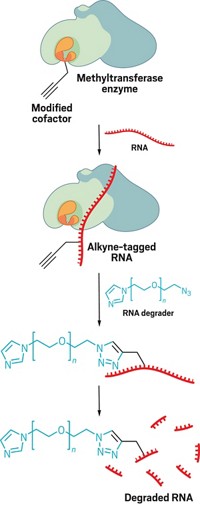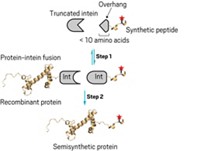Advertisement
Grab your lab coat. Let's get started
Welcome!
Welcome!
Create an account below to get 6 C&EN articles per month, receive newsletters and more - all free.
It seems this is your first time logging in online. Please enter the following information to continue.
As an ACS member you automatically get access to this site. All we need is few more details to create your reading experience.
Not you? Sign in with a different account.
Not you? Sign in with a different account.
ERROR 1
ERROR 1
ERROR 2
ERROR 2
ERROR 2
ERROR 2
ERROR 2
Password and Confirm password must match.
If you have an ACS member number, please enter it here so we can link this account to your membership. (optional)
ERROR 2
ACS values your privacy. By submitting your information, you are gaining access to C&EN and subscribing to our weekly newsletter. We use the information you provide to make your reading experience better, and we will never sell your data to third party members.
Biological Chemistry
Technique eases analysis of damaged RNA
New method allows researchers to analyze gene expression in preserved tissue biopsy samples
by Stu Borman
July 10, 2017
| A version of this story appeared in
Volume 95, Issue 28
When doctors take biopsies of a patient’s tissue, they often fix the tissue with formalin and embed it in wax to preserve it. But this process chemically modifies and fragments mRNAs in the tissue, making it difficult to analyze the mRNAs later to, for example, study gene expression patterns. This mRNA analysis typically involves reverse transcription, which requires long stretches of unmodified mRNA and subsequent amplification of the resulting complementary DNAs. An alternative gene expression analysis technique made by NanoString can handle damaged mRNAs, but it uses expensive instrumentation and proprietary reagents and has limited sensitivity, says Ben Larman of Johns Hopkins University School of Medicine. Larman and coworkers now report a competitive technique, called ligation in situ hybridization (LISH), that they think could be less expensive and more sensitive than NanoString’s (Nucleic Acids Res. 2017, DOI: 10.1093/nar/gkx471). In LISH, researchers design probes containing mostly DNA sequences that complement mRNA sequences of interest. Adding these probes to damaged mRNAs allows scientists to turn the mRNAs into sequences of mostly DNA that can be amplified and sequenced without reverse transcription.




Join the conversation
Contact the reporter
Submit a Letter to the Editor for publication
Engage with us on Twitter